A world-class observatory is rising!, Observing this western town of several hundred people | Government | Telescope | Saishiteng Mountain | Site selection | Astronomy | Deng Li | Cold Lake
Standing at an altitude of 4200 meters in Zone C of Saishiteng Mountain, the sky is deep blue, with gray black mountains and valleys crisscrossing, and the remaining snow on the mountaintop shimmers with silver.
Saishiteng Mountain is located in Lenghu Town, Mangya City, Haixi Prefecture, Qinghai Province. Here, the first world-class astronomical observation base in the Eastern Hemisphere is rising.
At the Cold Lake Astronomical Observation Base, multiple telescope projects are under construction in full swing. Provided by the Management Committee of the Cold Lake Science and Technology Innovation Industrial Park
In front of me, a large crane is slowly lifting a red telescope bracket. The telescope named Luoxiahong SONG will use this bracket to adjust the pitch angle and explore the internal structure of stars, thereby deepening human understanding of the universe and the origin of life. Deng Lizai, chief scientist of the Cold Lake Base of the National Astronomical Observatory of the Chinese Academy of Sciences, is in charge of the telescope. At this moment, he was excitedly busy, working with team members to place the bracket into the astronomical dome.
Not far away, trucks carrying cables and industrial computers headed towards the project area of the mid infrared observation system telescope for precise measurement of the solar magnetic field. From afar or near, white domed telescopes dot the desolate and rough mountains.
Five years ago, this place was deserted and uninhabited. Now, 35 telescopes with a total investment of nearly 2 billion yuan from 7 scientific research units have settled in Mount Saishiteng.
The high-speed construction of the astronomical observation base has revitalized the western town of Lenghu, which is a two-way journey between astronomers and the local government.

1
Excavation: Observation conditions comparable to world-class station sites
Standing at the foot of Mount Saishiteng, the sky is filled with stars. Unlike other places, the stars here seem to be nailed to the night sky and do not blink. "The fact that stars don't 'blink' means that the atmospheric stability here is excellent," explained Deng Licai. At the end of 2017, Deng Licai and his team arrived at Cold Lake, and they had a premonition that they might be able to create articles about the starry sky here.
Cold Lake Starry Night. Photo by Deng Licai
Subsequently, starting from 2018, they spent over three years exploring the desolate desert and high-altitude mountains in the northwest, monitoring and measuring various data. In August 2021, the demonstration of the discovery of a world-class observatory site in Cold Lake was published in the journal Nature, attracting international attention. This means that it has the highest quality optical astronomical observation conditions in the entire Eastern Hemisphere.
Lenghu Town is sparsely populated, with a current permanent population of approximately 600 people. In the early summer morning, Deng Li was wearing sunglasses, driving a pickup truck, and traveling with his team members from the town to Mount Saishiteng. The vehicles were speeding, and the rough and rugged Gobi Desert hurriedly passed by on both sides. The desert ahead was boundless, and the unique grandeur of the northwest was before our eyes.
Deng Licai has a straightforward personality, always full of energy, and it's hard to tell that he's almost 60 years old. The journey from Beijing to Dunhuang and then driving 250 kilometers from Dunhuang to Lenghu Town was quite tumultuous, but Deng and Li had to experience it two or three times a month.
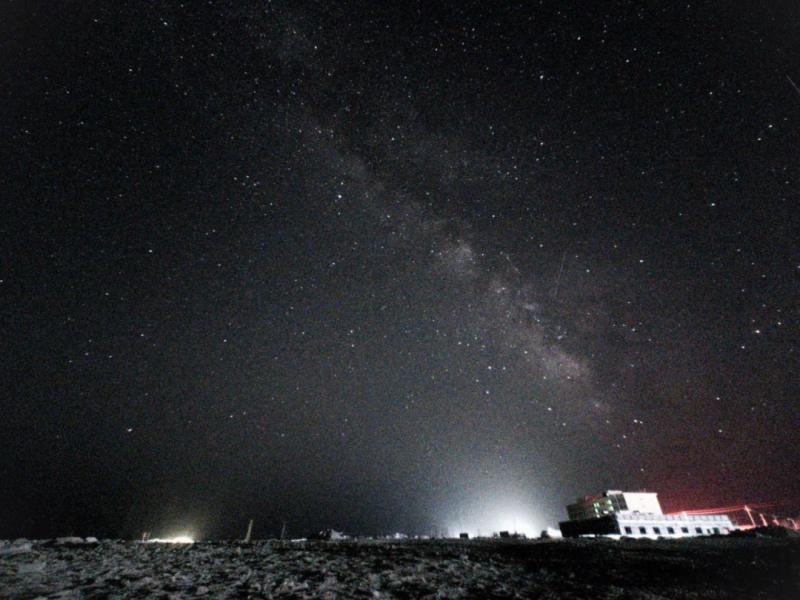
The Luoxia Hong SONG telescope is currently being installed. Respondents provide pictures
On June 7th, he returned to Cold Lake to carry out the installation and debugging work of the Luoxia Hong SONG telescope.
Five years ago, this telescope was still at the Delingha Astronomical Observatory 455 kilometers away from Cold Lake, and Mount Saishiteng was still a wild mountain.
All changes stem from scientists who hope to find new places for telescopes and local governments who hope to seek development opportunities for the Cold Lake. The encounter between the two sides has brought great surprises to the development of Chinese astronomy.
In 2017, the urban development of Delingha entered a fast lane, and light pollution and dust pollution seriously affected the observation ability of telescopes. The Luoxia Hong SONG telescope urgently needs a new home. At this time, the Cold Lake government is also seeking new paths for development, hoping to use the starry sky resources as an opportunity for development. Tian Cairang, who was then the Deputy Director of the Cold Lake Administrative Committee, approached Deng Licai in the hope of seeking a good plan from astronomers to utilize the starry sky.
Excellent astronomical observation stations are often built at the top of high mountains to reduce the absorption of celestial signals by atmospheric material components. In addition, the station site needs to be away from artificial light sources to ensure a clear night sky and dry air. The visibility represents the stability of the atmosphere over the observation station area, and is known as the lifeline of large optical telescopes, because atmospheric instability can cause star image blurring, affecting the upper limit of optical telescope resolution.
In order to gain a foothold in the field of international astronomical research, China launched the Western China Astronomical Strategy Site Selection Plan in 2000, searching for astronomical observation station sites that meet the above conditions. Although Cold Lake is favored, it has not been included in the candidate list because it is adjacent to the Taklamakan Desert, and sandstorms can have adverse effects on astronomy.

"But sand and dust will significantly decrease with increasing altitude. The altitude of Saishiteng Mountain in Cold Lake is relatively high, so sand and dust should not be a problem. Later long-term monitoring showed that Deng Licai's speculation was correct, and actual measurement data showed that the air on Saishiteng Mountain was clean, meeting observation needs.".
In January 2018, Deng Licai and his team began a targeted site selection for the 4200 meter Saishiteng Mountain in Lenghu.
The terrain of the Saishiteng Mountains is rugged, and in order to complete a series of tasks such as surveying the terrain, recording clear nights, and measuring visibility, Deng Licai and his team must conquer this wild mountain.
When climbing the Sai Shiteng Mountains for the first time, Deng Licai and Tian Cairang chose the wrong path and climbed up along the ridge. The mountain ridge has strong winds and low temperatures, and the terrain is extremely steep. "That was a challenge to life," Deng Licai recalled.
The left picture shows Deng Licai climbing Mount Saishiteng. The picture on the right shows Tian Cairang optimizing and marking the climbing route on the mountain. Respondents provide pictures
During the second mountain climb, in order to mark the route, Deng Licai's team and Tian Cai had someone specially bring spray paint along the climbed slopes to make markings. The distant mountains undulate, but behind them lies a vast abyss.
The group walked step by step, overcoming the cold and altitude sickness, breaking through their physical limits, and struggling to carve out a path up the mountain.
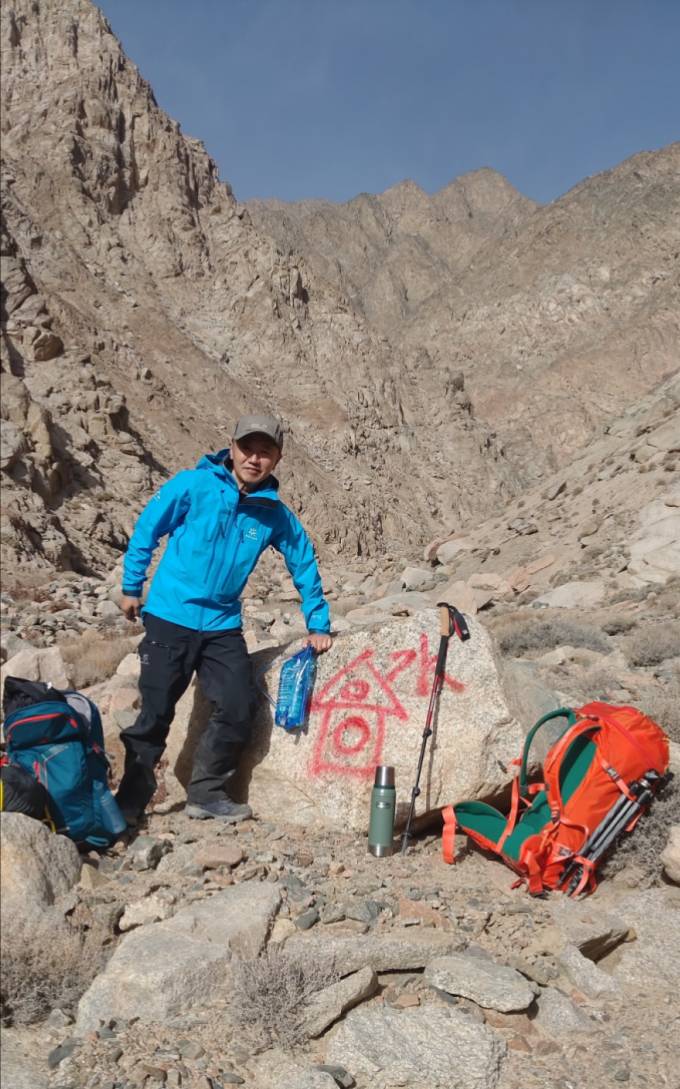
At that time, there was no electricity or internet on Mount Saishiteng, only 3G base stations at the foot of the mountain. "In this environment, just because of bad weather, the observation equipment may 'lose contact'. Therefore, we need to keep climbing mountains to maintain equipment, install new equipment, and complete data statistics more accurately." Yang Fan, assistant researcher of the National Astronomical Observatory of the Chinese Academy of Sciences, recalled the experience at that time.
On July 19, 2018, Deng Licai and Yang Fan installed visual acuity observation equipment. That night, the median statistical value of the Seshitengshan visual acuity was 0.79 arcseconds, which was exciting. Respondents provide pictures
Yang Fan is an important member of Deng Licai's team. On the evening of July 19, 2018, he stayed alone at Mount Saishiteng to measure the visibility of the site on the ground. That night, the median statistical value of the Seshitengshan visual acuity was 0.79 arcseconds.
Seeing the data, Yang Fan went crazy with joy.
"The visibility is a key parameter for the observatory site, and it would be great if it could be below 1 arcsecond. Moreover, at that time, the 10 meter tower required for the visibility equipment had not yet been built." Yang Fan said, "After the tower is built, the data will be even better."
The next morning, Yang Fan ran around the mountain with his phone frantically looking for signals, just to quickly tell the team the good news.
After three years of monitoring, data shows that the visual acuity here is basically on par with the recognized world-class observatories - the Hawaii Observatory in the United States and the Paranal Observatory in Chile.

Not only that, the high-quality clear night time in the cold lake station site area accounts for 70%, and the available astronomical observation time is 300 days per year. In addition, it is cold, windy, dry, and rainy all year round, meeting the basic conditions for world-class observatory sites.
For site selection work, the most important thing is the continuity, comparability, and transparency of monitoring data. To this end, Deng Licai and his team selected internationally recognized astronomical detection equipment and built a website to publicly disclose all raw data in real time.
"The optical astronomical observation conditions of Cold Lake are on par with those of top international observatories, which is very rare in the Eastern Hemisphere. If a large optical observatory could be built, I believe it would be very helpful for both China and the entire Asia," said Wu Xuebing, an astronomy professor at Peking University.
2
Construction: Make the vast starry sky a breakthrough point for urban transformation
In the desert about 70 kilometers away from Mount Saishiteng, there is a group of abandoned buildings. The streets within the building complex are spacious, and the houses are neatly arranged, which have become ruins and broken walls under the erosion of wind and sand. Walking along the street, the former bookstores, cinemas, post offices, and banks can be vaguely distinguished. At the end of the street, there is an abandoned factory quietly standing in the desert, with the words "Cold Lake Oil Mine" written on it.
Cold Lake Oil Base Site. Photo by Su Jingjing
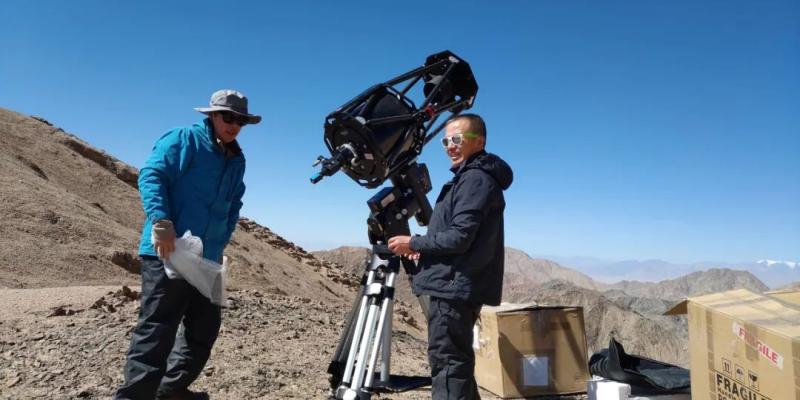
Cold Lake had a glorious history. In the 1960s, Lenghu was one of the four famous oil fields in China. The slogan "Go to Qaidam, go to Lenghu" once echoed throughout the country. At its peak, Lenghu had nearly 100000 people, with vehicles constantly coming and going, making it bustling and known as the "Little Hong Kong of the Northwest".
However, with the reduction of oil mining output, oil workers evacuated from Cold Lake, and the local population became smaller and smaller. The former "Cold Lake City" became "Cold Lake Town". In 2020, the permanent population of the town was only over 200 people, close to an empty city.
Cold Lake Oil Base Site. Provided by the Management Committee of the Cold Lake Science and Technology Innovation Industrial Park
How to seek new opportunities for the development of Cold Lake? This is a question that the local government continues to ponder and explore.
In 2015, Tian Cairang was transferred to Lenghu to be responsible for construction work. He is a Tibetan, very humble, and his dark face always wears a smile. Previously, he served as the Deputy Director of the Housing and Urban Rural Development Bureau of Haixi Prefecture.
Tian Cairang told the Science and Technology Daily reporter that for a period of time, due to the abundant resources of the cold lake salt lake, the cold lake government has been focusing on the salt lake as a secondary industry.
"However, the industrial enterprises related to salt lakes have a large area, usually over 500 square kilometers, and the salt lake is still more than 100 kilometers away from Lenghu Town. The employees within the enterprises live near the salt lake, which has limited impact on the development of Lenghu Town," said Tian Cairang.
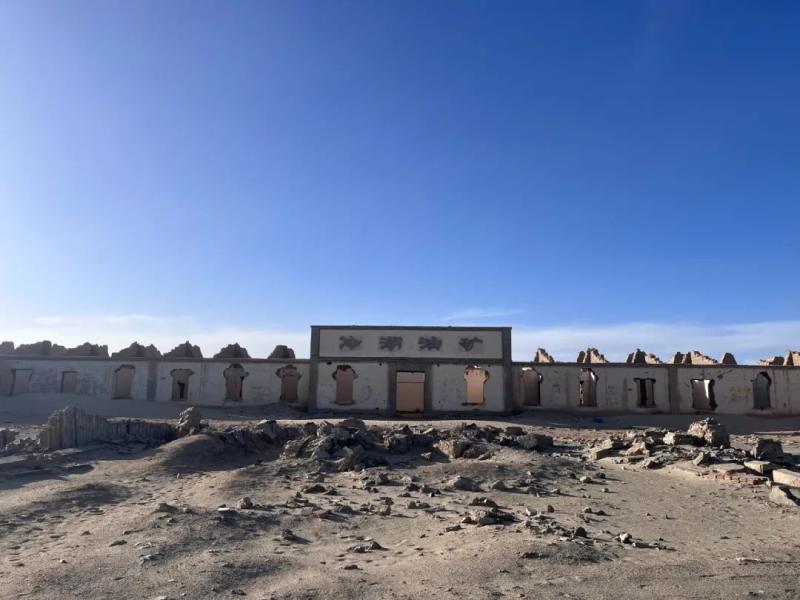
How to keep people in the cold lake? The local government is turning its attention to the tertiary industry. The beautiful starry sky has become a breakthrough point for the government to seek development. In order to rely on starry sky resources to develop the cultural and tourism industry, Tian Cairang constantly consulted astronomers and thus met Deng Licai. From then on, Cold Lake formed an inseparable bond with astronomy.
Deng Licai deeply felt that the construction of the Cold Lake Astronomical Observation Base cannot be separated from the full investment of the local government.
In December 2017, less than five months after the first meeting between Deng Licai and Tian Cairang, the National Astronomical Observatory of the Chinese Academy of Sciences, the Zijinshan Observatory of the Chinese Academy of Sciences, West China Normal University and the Haixi Prefecture Government signed the Quadripartite Agreement on the Site Selection Plan for Large Optical Telescopes in the Cold Lake Region.
The agreement stipulates that the government of Haixi Prefecture will provide financial support for site selection and formulate relevant policies to strictly limit the possible light pollution in the cold lake area. The site selection was jointly completed by the National Astronomical Observatory of the Chinese Academy of Sciences, the Zijinshan Observatory of the Chinese Academy of Sciences and West China Normal University.
In April 2018, the road construction work from Lenghu Town to the site of Saishitengshan started. 18 months later, the construction of a 37 kilometer gravel road was completed.
In May 2018, the government of Haixi Prefecture coordinated the deployment of helicopters to transport site personnel to the site for the first time. In the following two months, helicopters ensured the smooth ascent of more infrastructure materials and measuring equipment.
"Without the support of helicopters, the site selection work cannot be carried out, but the completion time will be delayed by at least one and a half years. Without the full participation of local governments and officials, it is uncertain when and under what conditions the site selection for the Cold Lake Observatory will begin." Deng Licai sighed.
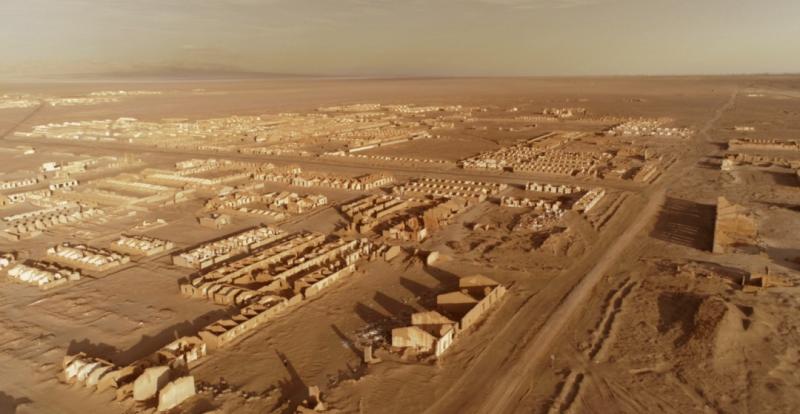
A mid infrared observation system telescope project for precise measurement of the solar magnetic field. Photo by Su Jingjing
In January of this year, the Regulations on the Protection of the Cold Lake Astronomical Observation Environment in Haixi Mongolian and Tibetan Autonomous Prefecture were officially implemented, becoming the first local regulation on the protection of the dark night sky in China. According to the regulations, the dark night protection core area refers to the area within 50 kilometers of the geometric closed area boundary of the site selected for the overall development plan of the Cold Lake Astronomical Observation Base.
The entire town area of Lenghu Town has been designated within this area. This means that in the future, the types and brightness of light sources in Lenghu Town will be strictly controlled, and the illumination direction of all outdoor fixed night lighting facilities should be 30 degrees below the horizontal line.
The process of introducing this law was not easy, and many industries have made concessions for it. The Chairman of the Standing Committee of the People's Congress of Haixi Prefecture asked Tai to speak.
It is reported that previously, a new energy project had been laid out in the core area of the night protection, and the project has been preliminarily launched. However, wind power facilities in new energy projects have a serious impact on optical astronomical observations. Therefore, the local government has gone through multiple rounds of communication with relevant units and enterprises. In the end, these projects were re selected and moved away from the core area of night protection.
"At that time, Wang Weidong, a member of the Standing Committee of the Qinghai Provincial Party Committee, stated that the optical astronomical observation conditions of Cold Lake were scarce resources at the national level. Regardless, this area should be protected as much as possible. This greatly promoted the legislative process," said Tian Cairang.
3
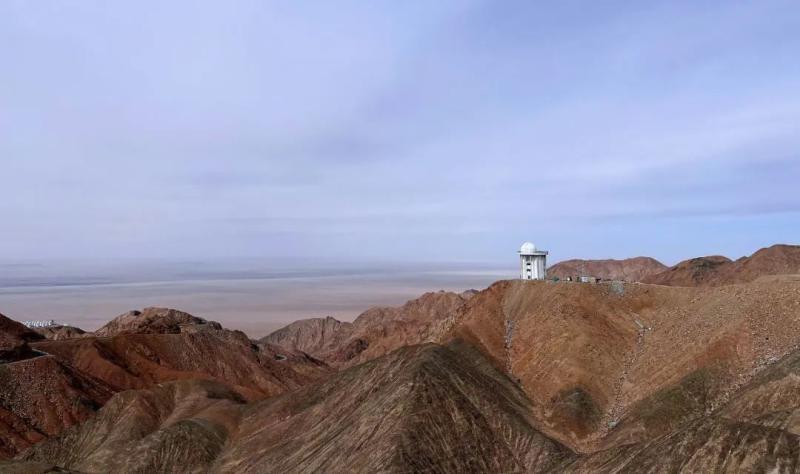
Development: Holding Hands with Astronomy to Play the New Life Song of Cold Lake
Astronomical observation bases are becoming the golden calling card of Cold Lake.
Relying on astronomical resources and the local Yadan landform, in August 2017, Lenghu launched the Mars Town Plan to create a cultural and creative tourism base with science as the core and science fiction as the radiation. In March 2019, the first phase of the Cold Lake Mars Camp project entered trial operation. At the campsite, tourists can simulate landing on Mars, completing "Mars missions" such as Gobi hiking, searching for water sources, and searching for supplies. Whenever night falls, the "navigator" of the Mars campsite will lead tourists to find the best shooting location for the starry sky.
The cold lake Obo Liang Yadan landform is known as the most Martian like place on Earth. Map provided by Cold Lake Mars Town
Cold Lake Mars Camp. Map provided by Cold Lake Mars Town
Yuan Zhenmin, Executive Deputy Manager of Cold Lake Mars Town, told reporters that reservations for this year's Mars campsite have been scheduled for October, and more and more tourists and astronomy enthusiasts are choosing to travel here.
Data shows that from January to May this year, the total number of tourists received in Lenghu Town was over 31600, with a total tourism revenue of about 15.8 million yuan. Among them, the Mars campsite received more than 21000 tourists. It is expected that by 2030, Cold Lake will receive over one million tourists and its comprehensive tourism revenue will exceed 400 million yuan.

In addition to the cultural and tourism industry, Lenghu is also cultivating the astronomical technology industry and aerospace industry around the astronomical observation base.
The astronomical technology industry mainly provides comprehensive operation and maintenance support services for telescopes settled in cold lakes. "We have currently connected with multiple telescope operation and maintenance service enterprises in Nanjing and Beijing. In the future, the coating, dome processing and manufacturing, astronomical data storage, and calculation of telescopes will all be carried out within the Cold Lake Science and Technology Innovation Industrial Park," said Cao Chunlin, a staff member of the Cold Lake Science and Technology Innovation Industrial Park Management Committee.
In 2019, China's first recyclable rocket launch and recovery test was successfully conducted in Lenghu. Provided by the Management Committee of the Cold Lake Science and Technology Innovation Industrial Park
The aerospace industry focuses on the research and development, final assembly, and testing of recyclable rockets. Due to its vast uninhabited area, Cold Lake is often chosen as a rocket launch experimental site. In 2019, the country's first recyclable rocket launch and recovery test was successful in Cold Lake. In 2022, the world's first space-based platform rocket near space was successfully launched from Cold Lake. Cao Chunlin introduced that in the future, a sounding rocket launch site will be built in Lenghu, and a rocket assembly and debugging workshop will be built to provide rocket assembly, debugging, and testing sites for various types of suborbital rocket launches. "The gathering and development of these technological industries will drive a continuous increase in the local population. It is expected that the permanent population of Lenghu will increase by 7 to 10 times in 5 years," Cao Chunlin said.
At 9 o'clock at night, walking in the Lenghu town area, the street lights were dim, emitting a leisurely white light. There are also several small restaurants with doors open, and the restaurant is fully booked. Among the customers who dine, there are tourists who come specifically to Cold Lake for tourism, construction teams working at the Cold Lake Astronomical Observation Base, and astronomers debugging and installing telescopes. Everyone was talking and laughing, it was very lively.
Five years ago, Cold Lake did not have such a scene. Deng Yuanyong, director of the Huairou Solar Observation Base of the National Astronomical Observatory of the Chinese Academy of Sciences, remembers how he felt when he first came to the Cold Lake a few years ago. "I was worried that the Cold Lake would be completely empty one day. At that time, he wanted to hold academic conferences in the Cold Lake, but there was no room or board. Now it is different."
Ms. Li is the front desk of a hotel in Lenghu Town. In 2020, she came from Xining to work in Lenghu. "My sister lives in Cold Lake. I heard that Cold Lake is building an astronomical observation base and has a promising tourism industry, so I came here three years ago." Ms. Li told reporters that in the past month, the hotel where she works has been mostly full. In her opinion, the biggest change in Cold Lake is the increase in people.

Cold Lake Astronomical Observation Base. Photo by Su Jingjing
"The astronomical observation base is indeed attracting more and more people to come to Lenghu. They come here to work, consume, promote commercial development, increase employment, and revitalize the overall development of Lenghu Town," said Tian Cairang.
The future cold lake will be even more lively. But will the increase in permanent population and tourists lead Cold Lake onto the old path of Delingha, affecting astronomical observations? Astronomers are more optimistic about this.
"Indeed, many astronomical observatory sites have been relocated due to urban development, lighting, and dust pollution," said Deng Yuanyong. "But Cold Lake is different. Since the location was chosen, Deng Licai's team and local government have been continuously promoting measures for night protection. Now, the first local regulation for night protection in China has also been introduced."
In Deng Licai's opinion, the transportation in Cold Lake is inconvenient and it is very difficult to come here. He believes that tourists who come here on long journeys will understand the significance of protecting the dark night starry sky.
Deng Yuanyong believed that everything depends on human factors. "As long as the relevant requirements for night protection are implemented in accordance with regulations, it will not affect the quality of observation. The 'popularity' of urban areas also has a positive impact on observation, which can bring better logistics support."
"With more infrastructure construction and further testing, it is believed that in the future, Cold Lake will become an important base for international optical and astronomical research, an important source for human exploration of the mysteries of the universe, and the cultivation of original scientific achievements." Deng Licai is full of confidence.

Cold Lake, this western town on the plateau, has risen in the wilderness and played its own new song on the way towards the universe and stars.
Short review
Astronomy is hot, cold lakes are not cold
Su Jingjing
From an unknown place of origin to building a world-class astronomical observation base, Cold Lake fully taps into the technological value of the natural endowment of "beautiful starry sky", transforming the "empty city" into an "astronomical city" and accumulating experience for the successful transformation of resource depleted areas.
In 2022, the government of Haixi Prefecture, Qinghai Province, based on the advantages of cold lake and starry sky resources, proposed to build cold lake into a technology industry demonstration base with "astronomical technology and aerospace" industry as the core by the end of the 14th Five Year Plan, and a world-class science fiction cultural and creative tourism destination with "technology, science fiction, cultural and creative, and popular science" as the characteristics.
In today's cold lake, the construction of "white balls" on Mount Saishiteng is hot, and it is difficult to find a Mars campsite. From the Science Fiction Literature Award to the Mars Music Festival, Cold Lake




